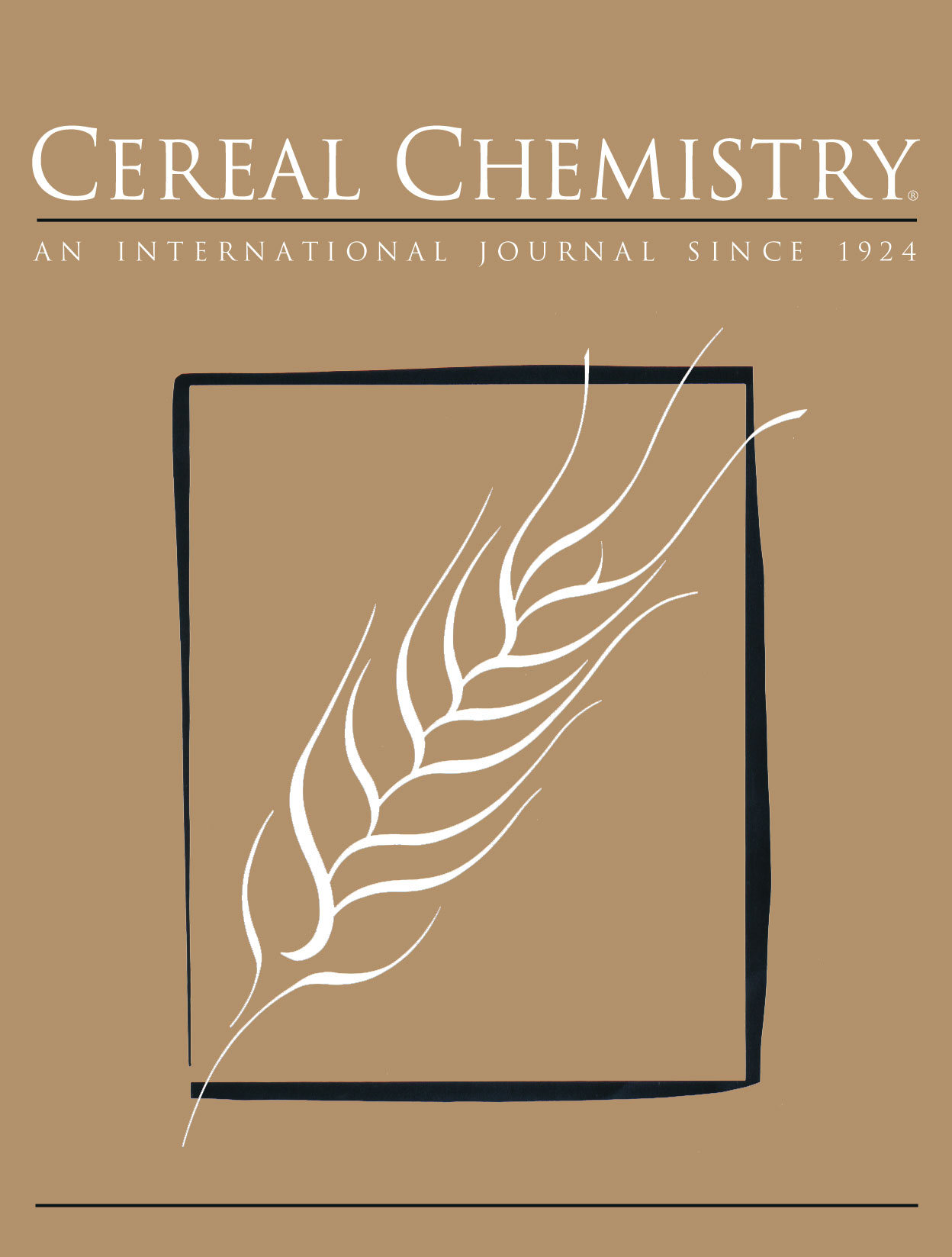Effect of Microbial Transglutaminase on Dough Proteins of Hard and Soft (Triticum aestivium) and Durum (Triticum durum) Wheat Cultivars
ABSTRACT
Microbial transglutaminase (MTGase), a protein-glutamine γ-glutamyl transferase (E.C. 2.3.2.13), catalyzes acyl transfer reactions by introducing a covalent cross-link between l-lysine and l-glutamine residues. The use of this enzyme has been proposed as an improver to increase dough strength. The objective of this study was to assess and compare the effect of MTGase on different fractions of dough proteins found in hard, soft, and durum wheat. Three different concentrations of the MTGase (0, 5, and 10U/g of gluten) were tested. Moisture, protein, and dry gluten contents were determined for each concentration in addition to rheological measurements done with the farinograph. Following each treatment, the dough proteins were extracted and analyzed by SE-HPLC and RP-HPLC. Soluble polymeric protein, gliadins, albumins, and globulins were quantified in addition to the gliadin subclasses and glutenin subunit types. The combustion procedure was used to determine the amount of insoluble polymeric protein. Differences were observed in susceptibility to MTGase catalysis among the dough proteins of the cultivars studied: the cultivar Cortazar (soft wheat) was the most susceptible. The proteins of this cultivar had a characteristically higher amount of ω and α+β gliadins when compared with the other cultivars. As reported earlier, solubility of high molecular weight glutenin subunits and ω-gliadins was reduced because of the MTGase treatment. However, all gliadin subclasses, including the γ and α+β gliadins, also participated in cross-linking. The proteins of the cultivar Altar (durum wheat) were the least susceptible to the effects of MTGase. Albumins and globulins did not show any reduction in solubility, implying that they did not participate in cross-linking.




